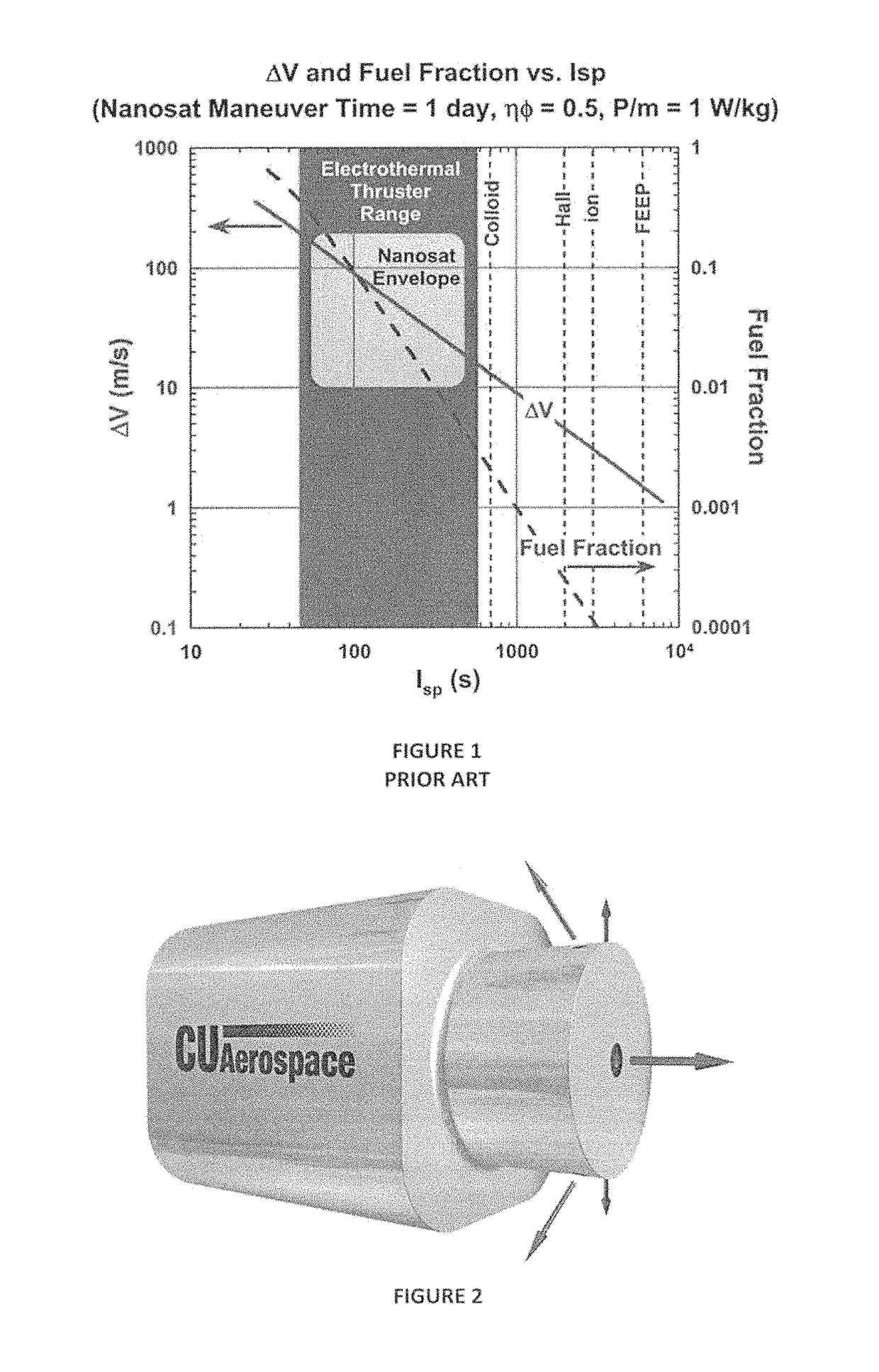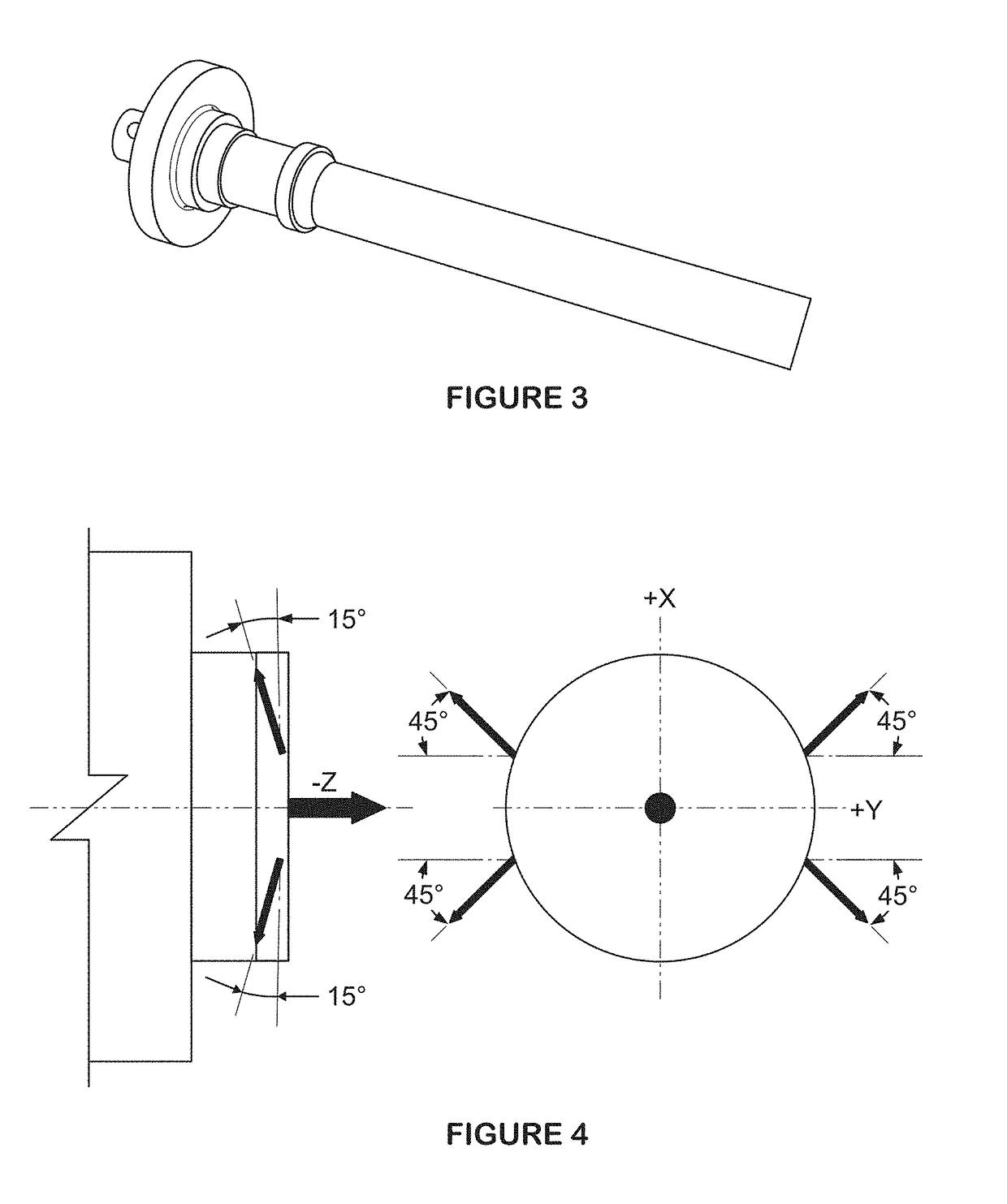Electrothermal space thruster heater for decomposable propellants
a heater and propellant technology, applied in the field of space exploration, can solve the problems of limiting mission duration and on-orbit operations, avoiding primary propulsion, etc., and achieve the effect of reducing losses and heating efficiency
- Summary
- Abstract
- Description
- Claims
- Application Information
AI Technical Summary
Benefits of technology
Problems solved by technology
Method used
Image
Examples
Embodiment Construction
[0024]NANOSATELLITE THRUSTER CHOICES—An important question for nanosatellites is: what range of efficiency and specific impulse are appropriate for a nanosat electric micropropulsion system? TRL 9 EP systems have flown with efficiency η (%) and specific impulse Isp (s) including the pulsed plasma thruster (10%, 1000 s); the resistojet (50-80%, 300 s); the Hall thruster (50%, 2000 s); and the ion thruster (70%, 3000 s). Other EP systems in advanced development are the colloid thruster; and the FEEP thruster. Propulsion selection for nanosats depends on the propulsion capability, expressed in terms of the maneuver time and the required orbital maneuver expressed in terms of ΔV, and also on the mass and volume available for the propulsion system on the nanosat.
[0025]The prior art includes an equation for a constrained maneuver time that showed ΔV varying inversely with Ue; a priori, this is counterintuitive because high ΔV interplanetary missions typically utilize high specific impulse...
PUM
 Login to View More
Login to View More Abstract
Description
Claims
Application Information
 Login to View More
Login to View More - R&D
- Intellectual Property
- Life Sciences
- Materials
- Tech Scout
- Unparalleled Data Quality
- Higher Quality Content
- 60% Fewer Hallucinations
Browse by: Latest US Patents, China's latest patents, Technical Efficacy Thesaurus, Application Domain, Technology Topic, Popular Technical Reports.
© 2025 PatSnap. All rights reserved.Legal|Privacy policy|Modern Slavery Act Transparency Statement|Sitemap|About US| Contact US: help@patsnap.com



